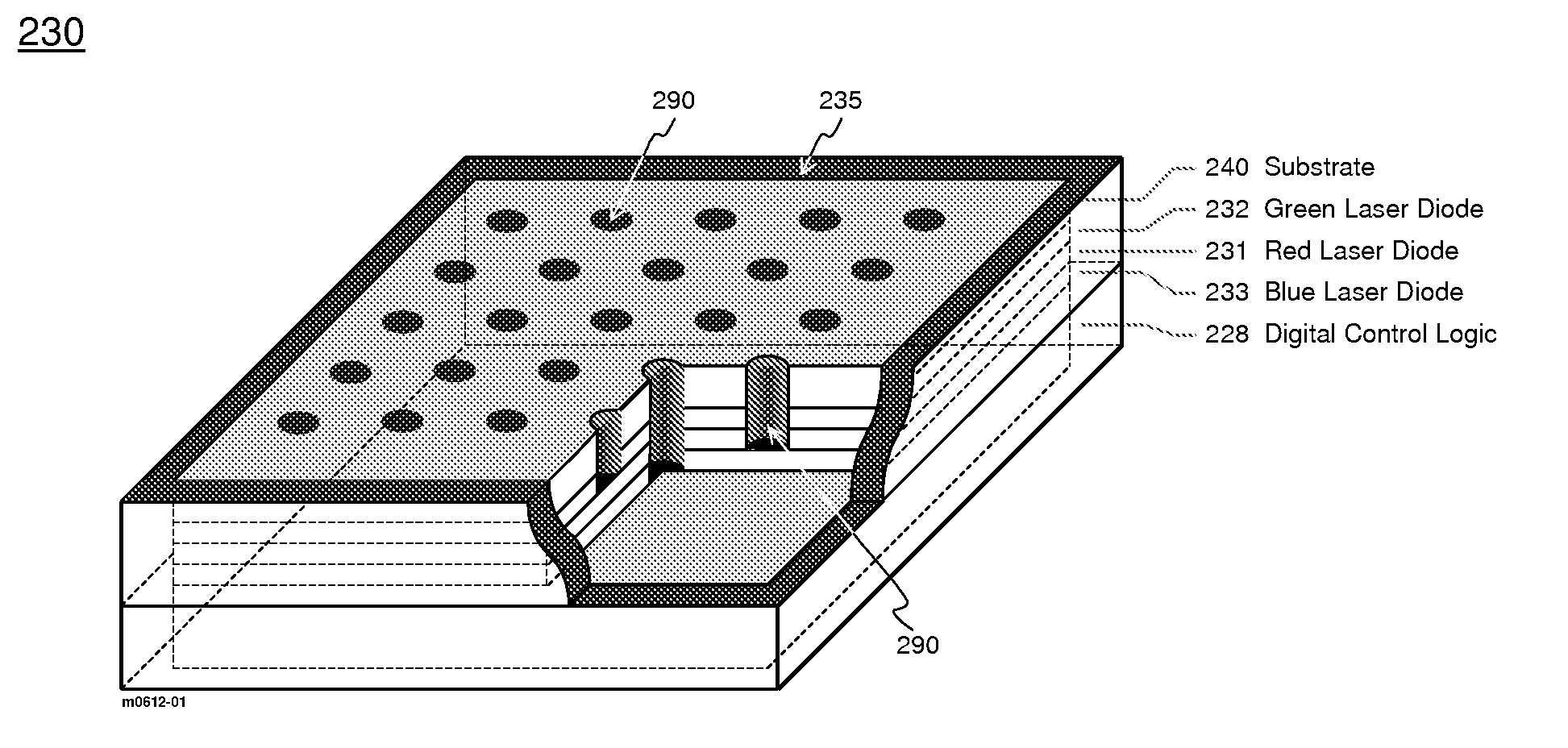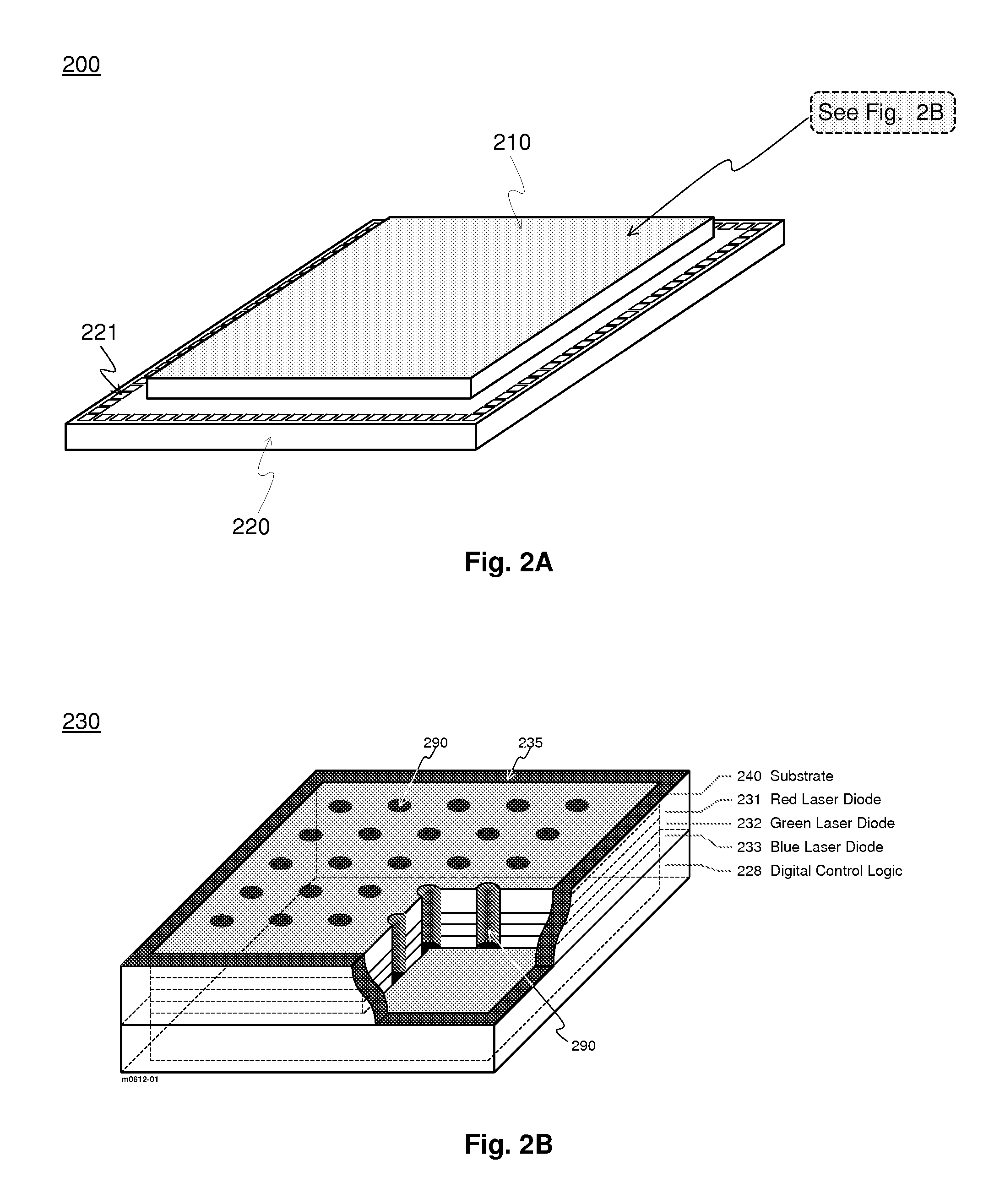Quantum Photonic Imagers and Methods of Fabrication Thereof
a quantum photonic imager and imager technology, applied in static indicating devices, semiconductor lasers, instruments, etc., can solve the problems of increasing the cost of the display system, reducing the efficiency of the light source, and adding complexity and cost to the overall display system
- Summary
- Abstract
- Description
- Claims
- Application Information
AI Technical Summary
Benefits of technology
Problems solved by technology
Method used
Image
Examples
first embodiment
of the Vertical Waveguides
[0153]In one embodiment of the Quantum Photonic Imager device 200 of this invention the cores 291 of the pixel's vertical waveguides 290 would be “evanescence field coupled” to the optical confinement regions of stacked laser diodes 231, 232, and 233 that form a single pixel 230. In this embodiment the vertical waveguide cladding 292 would be comprised of an outer layer 293 of 50-nm to 100-nm thick of insulating material, such as SiO2, and an inner layer 294 of highly reflective metal such as aluminum (Al), silver (Ag) or gold (Au). The core 291 of the vertical waveguides 290 could either be air-filled or filled with a dielectric material such as SiO2, silicon nitride (Si3N4) or tantalum pentoxide (TaO5). Through the evanescence field coupling of this embodiment, a fraction of the laser light confined within the optical confinement region of each of the laser diodes 231, 232, and 233 would be coupled into the dielectric core 291 of the vertical waveguides 2...
second embodiment
of the Vertical Waveguides
[0158]In another embodiment of the Quantum Photonic Imager device 200 of this invention the cores 291 of the pixel's vertical waveguides 290 would be coupled to the optical confinement regions of stacked laser diodes 231, 232, and 233 that form a single pixel 230 through the use of anisotropic multilayer thin cladding. What is meant by “anisotropic” in this context is that the reflectance / transmittance characteristics would be asymmetric at either side of the interface between the vertical waveguide 290 and the optical confinement regions of the stacked laser diodes 231, 232, and 233. The simplest realization of this embodiment would be to use a single thin cladding layer 293 having a refractive index value between that of the waveguide core 291 and the optical confinement regions of laser diodes 231, 232, and 233 and having the waveguide core 291 preferably filled with a dielectric material preferably having a refractive index that is at least equal to tha...
PUM
 Login to View More
Login to View More Abstract
Description
Claims
Application Information
 Login to View More
Login to View More - R&D
- Intellectual Property
- Life Sciences
- Materials
- Tech Scout
- Unparalleled Data Quality
- Higher Quality Content
- 60% Fewer Hallucinations
Browse by: Latest US Patents, China's latest patents, Technical Efficacy Thesaurus, Application Domain, Technology Topic, Popular Technical Reports.
© 2025 PatSnap. All rights reserved.Legal|Privacy policy|Modern Slavery Act Transparency Statement|Sitemap|About US| Contact US: help@patsnap.com



